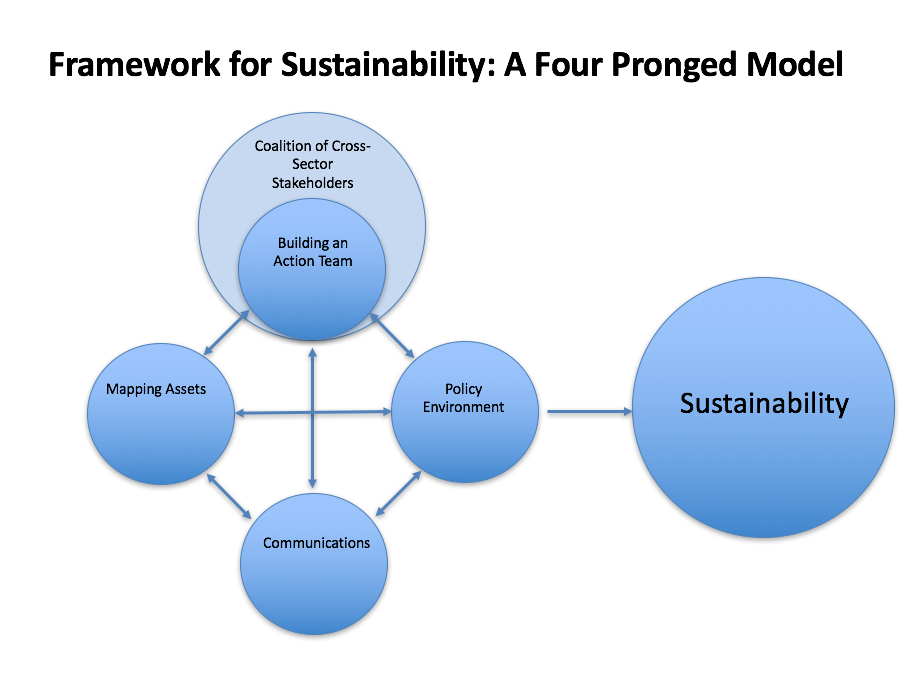The Action Guide offers tools and practical guidance on creating and sustaining school-connected initiatives that support student development and learning. It will be useful to school administrators and personnel, leaders of foundations and government agencies, program directors, civic leaders, and anyone interested in promoting children’s well-being by aligning school and community efforts.
It recognizes that every community is unique, so outlines the processes schools and communities can take together to sustain the initiatives that meet their goals. This approach prompts you to think about how to coordinate and embed effective programs and practices at a systems-level, rather than prescribe a single program or intervention. And it will help you weigh how to leverage resources across sectors and institutions to provide the most effective supports for students in your community.
The Action Guide is built on these basic tenets:
- The whole community is responsible for providing the environments and supports essential for children’s success.
- No one sector or institution can do it alone.
- Defining a vision or goal across sectors will garner the best results.
- Taking a systems-based approach will be most effective and long-lasting.
- Planning is essential. It may seem time-consuming, but it is necessary to achieve success.
- Keys to sustainability are recognizing that it:
- Embraces systems integration
- Must include a focus on prevention as well as targeted intervention since implementing prevention is a critical part of reducing the risk for potential problems
- Involves changes to practices and procedures as well as to formal policies
- Could require new resources, coordination with already available resources, or reallocation of current resources
- Is not a linear process but one that requires continuous evaluation and refinement to improve strategies and fit the changing environment
Originally designed to help organizers sustain successful school-connected programs in child development and prevention (such as Communities That Care, Safe Schools/Healthy Students, or Promise Zones), the Action Guide is equally helpful to those who are looking to improve student well-being through school-community aligned efforts that focus on such topics as school climate, mental health, chronic absenteeism, social and emotional development, youth development, and life skills or such strategies as community schools. Whether you are just starting to organize to address a community need or looking to continue effective programming, it is important to plan with sustainability in mind.
Building and sustaining a child development and wellness infrastructure across school and community involves:
- Linking to multiple sectors and creating a network of supporters and partnerships across the community (health professionals, community leaders, government officials, educators, student support personnel, other school and community members, business leaders, students and their families)
- Creating a core leadership group and building an organizational structure
- Developing and communicating a common goal
- Understanding both the issues and challenges that affect student health and success and the resources available across sectors
- Understanding, tracking and engaging in the ever-changing policy environment, including legislative, regulatory, or procedural targets
- Developing strategies for pursuing systems change
- Communicating to community members in and out of your network
The Action Guide consolidates these into a four-pronged strategy that can be adapted for varying situations, from state to more local purposes, from just starting to strategize on how to improve student well-being and social, behavioral and academic outcomes to figuring out how to sustain effective programming. This section provides both an overview and conceptual basis for the Guide, as well as an “on-ramp” for those just starting out; each subsequent section dives deeper into the crucial steps towards sustainability. The strategy:
- Prioritizes networking and building/strengthening relationships with community agencies, school leaders, elected officials, appointed policy leaders and decision-makers at local and state levels, and with well-connected citizens and professionals. It includes community members who share your goals, have political clout, and can help navigate policies and procedures (Building an Action Team).
- Builds on strengths of effective school-owned and community-based programs currently in place in your locality or state. Mapping these resources builds relationships among partners, identifies existing programs and resources, and uncovers potential gaps and opportunities for improvement (Mapping Assets).
- Requires keeping abreast of the policy environment. Understanding the policies that impact your initiative and having relationships with the people who can influence or change those policies is crucial to enacting systems change (Connecting with the Policy Environment).
- Emphasizes positive messages that are framed to generate support from strategically targeted audiences, both the broader public interest and the narrower professional interests, and focuses on existing community assets while calling for specific actions (Communications).
Below is a visual representation of the strategy.

This graphic can also be downloaded here.
Updated May 2018


